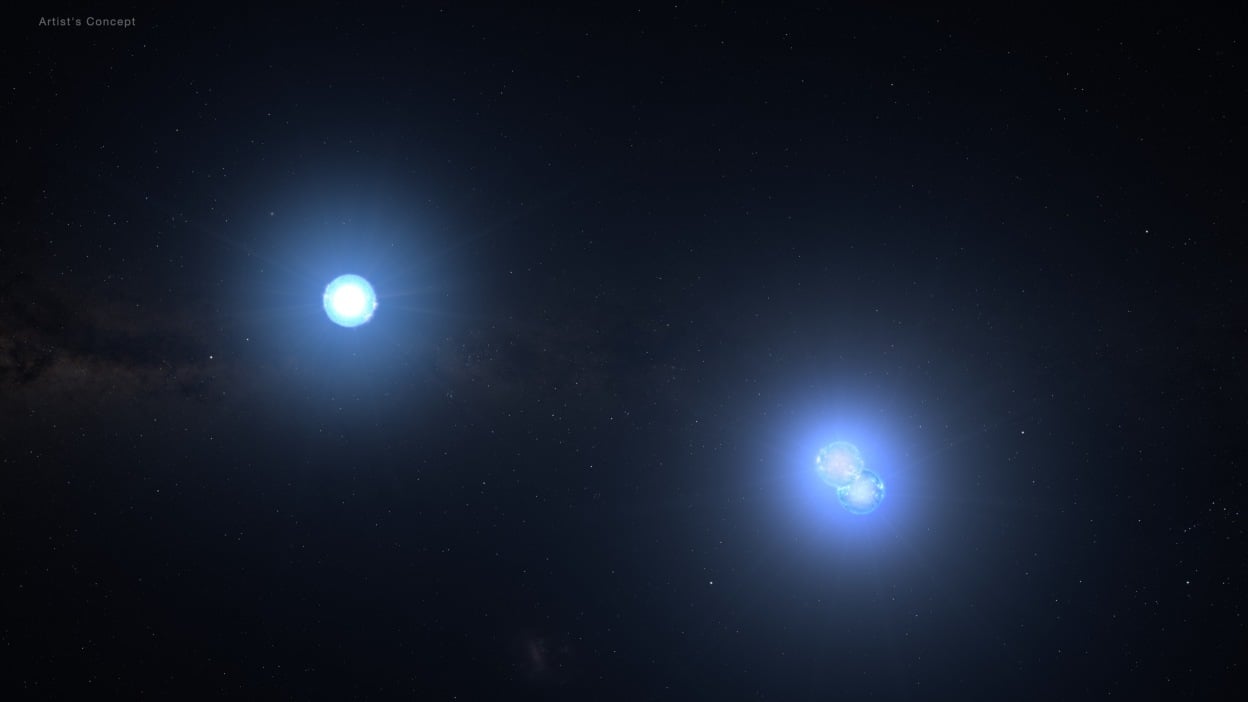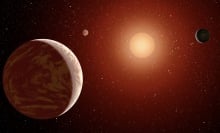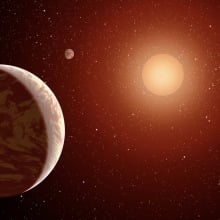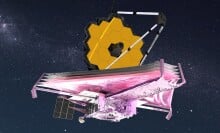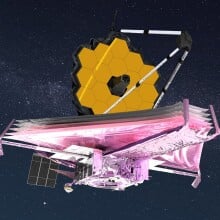Scientists have found a trio of stars dancing a high-speed cosmic do-si-do.
In fact, the stars' tempo is so rapid, astronomers have labeled this a new record: Here, a pair of stars orbit each other in less than two Earth days, while a third makes a trip around them in 25 days. Before this discovery, the fastest known three-star grouping was Lambda Tauri, with its farthest star circling in 33 days.
It took 68 years to beat the record holder. A NASA satellite, MIT researchers, artificial intelligence, and even a few amateur astronomers worked together to find the triplets, part of a system called TIC 290061484 in the constellation Cygnus.
"It’s exciting to identify a system like this because they’re rarely found," said Saul Rappaport, a retired MIT astronomer, in a statement, "but they may be more common than current tallies suggest."
You can watch the stars' unique orbit in the video below:
NASA's TESS mission — short for Transiting Exoplanet Survey Satellite — is mostly looking for new worlds as they pass in front of their host stars. But this unusual trio was detected because of the group's "strobe lights." The system is almost flat from the telescope's vantage point in space, so that means as the stars cross in front of each other during their orbits, they create eclipses. As the nearer star blocks the farther star's light, it will cause a flicker.
Amateur astronomers who were looking for interesting cases found the eclipse patterns among TESS data with the help of machine learning. These sleuths originally met as participants in an online citizen science program called Planet Hunters. Later they collaborated again with professional astronomers to form the Visual Survey Group, an ongoing project of more than a decade. The team's paper detailing the unusually fast triplets was published in The Astrophysical Journal this week.
The three stars are more massive than the sun, each ranging from six to eight times its weight. Based on their configuration, the stars' orbits are thought to be stable for millions of years. But, as they age, they'll eventually merge, exploding in a supernova and leaving behind a neutron star, one of the densest objects in space. That probably won't happen for 20 to 40 million years.
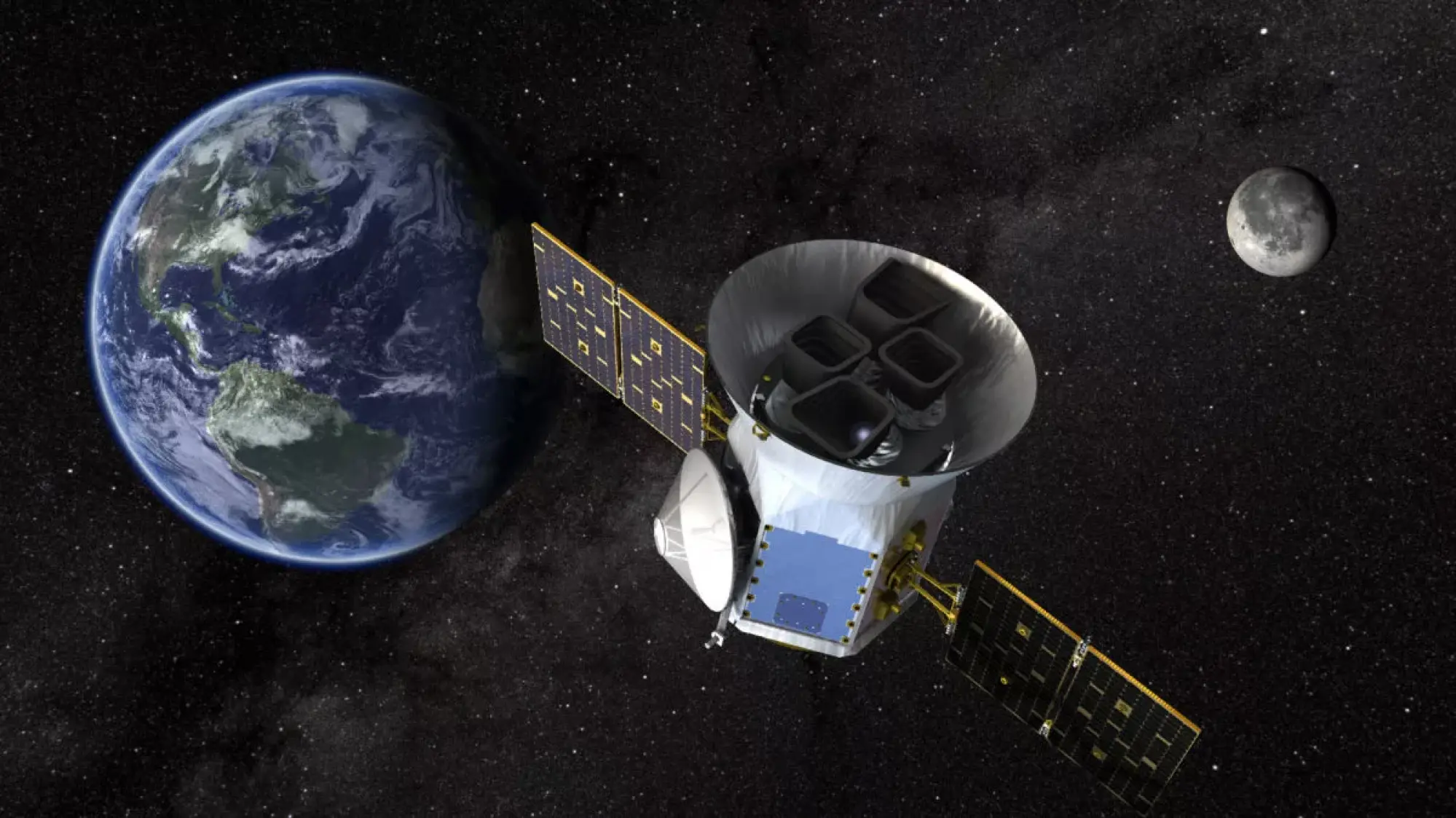
So far the team knows of no planets circling these stars. In the unlikely event that there is one, it would probably be far away, circling the three as if they were one star. The triplets' waltz through the sky is quite compact, happening within a ballroom more cramped than Mercury's orbit around the sun.
"No one lives here," Rappaport said. "We think the stars formed together from the same growth process, which would have disrupted planets from forming very closely around any of the stars."
Scientists say more than half of all stars in the galaxy have one or more companion stars. These solar systems can differ widely. Some have large hot stars coupled with smaller cooler ones, or pairs in which one star cannibalizes the other. The systems discovered have ranged from two to seven stars.
The way these stellar groupings orbit each other can be extremely complex. In one six-star system, TYC 7037-89-1, three couples orbit each other, but two of the three pairs also circle one another. The third duo, in a vaster orbit, revolves around the other two pairs.
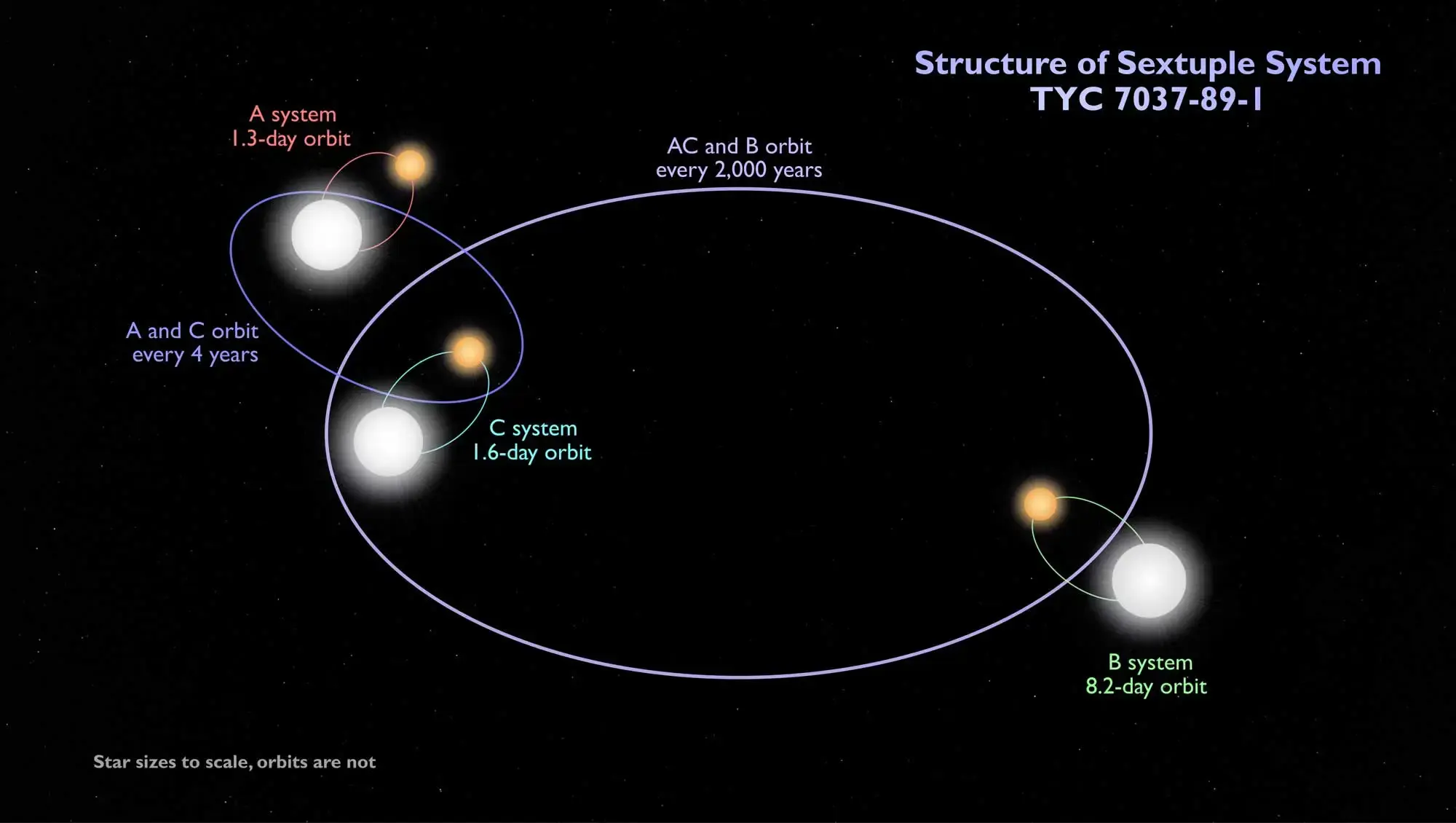
In the newly discovered system, there's one more surprise. The stars are merely cogs in a larger machine. That's right: There's yet another comparable star among this group, making a distant loop over 3,200 days.
The team wants to continue studying TIC 290061484 to collect more data on the fourth straggler star, as well as capture more details about the other stars' orbits, masses, sizes, and temperatures. With more sophisticated observatories in the future, such as NASA's Nancy Grace Roman Space Telescope under development, studying other eclipsing star systems of even larger groups may become easier.
"Before scientists discovered triply eclipsing triple star systems, we didn’t expect them to be out there," said co-author Tamás Borkovits, a research scientist at The University of Szeged in Hungary, in a statement. "But once we found them, we thought, 'Well, why not?'"
Topics NASA
